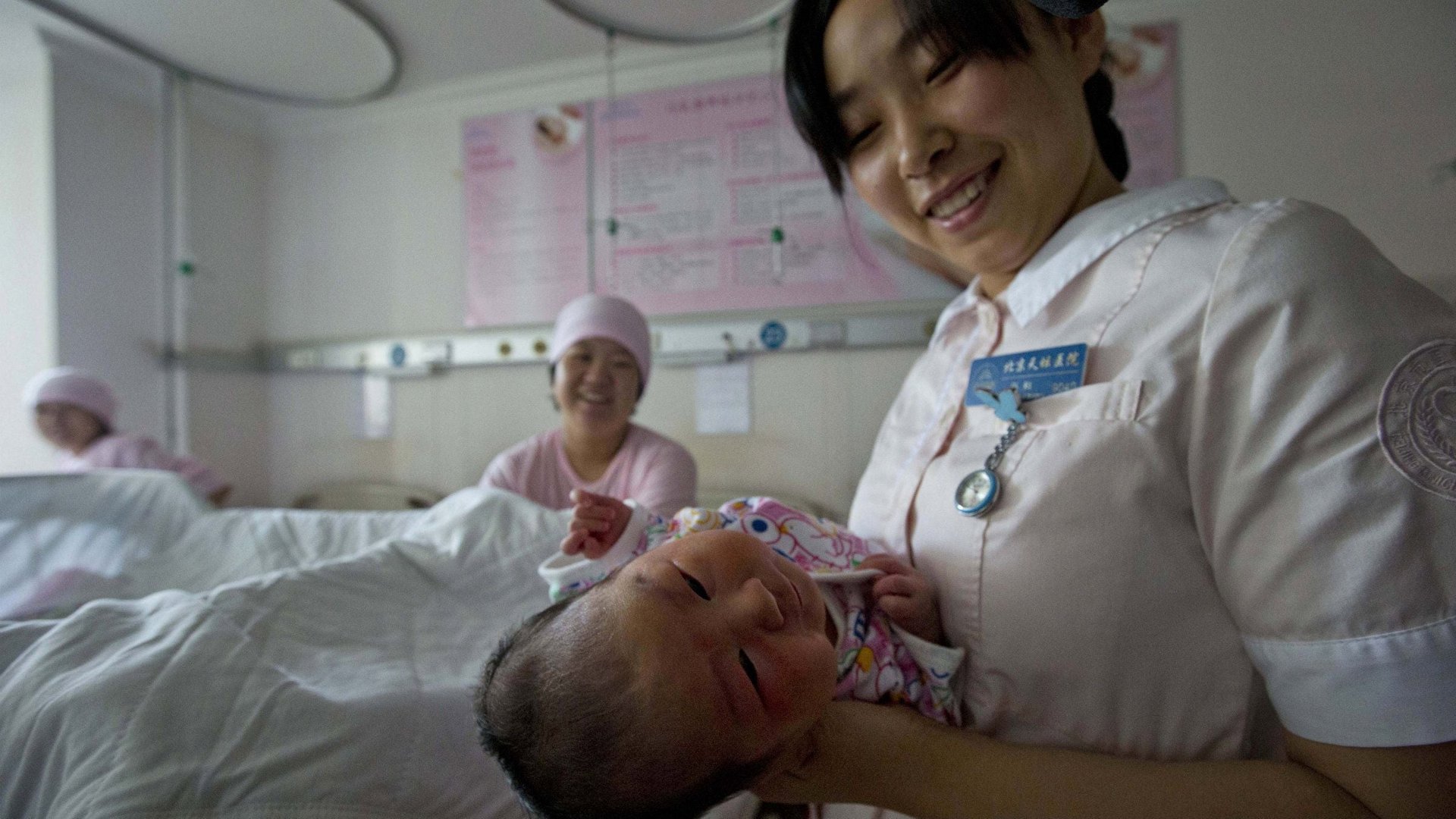Six things that will change with the loosening of China’s one-child policy
China is finally dropping its one-child policy for around one-third of the population: couples that are urban and Han Chinese in which one parent is an only child. (Couples that are rural, non-Han, or where both parents were only children were already allowed to have two kids.) The policy will remain in force only for urban Han parents who were both the product of two-child homes—a fairly small proportion.


China is finally dropping its one-child policy for around one-third of the population: couples that are urban and Han Chinese in which one parent is an only child. (Couples that are rural, non-Han, or where both parents were only children were already allowed to have two kids.) The policy will remain in force only for urban Han parents who were both the product of two-child homes—a fairly small proportion.
Bank of America estimates that the change will lead to about 9.5 million new births a year, but just as importantly the change largely marks the end of a 30-year-old social engineering experiment that changed the face of China’s society and played an important, if contentious, role in its re-emergence as an economic powerhouse. Quartz has reported extensively on what such a change might mean, for better and for worse. Here’s a roundup:
A larger labor force—eventually
China’s approximately 930-million-person labor force shrank last year for the first time in decades, and will decline further as a population bulge of people now in their 40s and 50s pass into retirement. A baby boom would help compensate, and—when the babies grow up—increase the number of people who can support that aging population. However, it may be too little too late, given that the labor force is estimated to begin declining by as much as 10 million a year starting in 2025. Any population rebound will take decades, and could be offset if families start averaging fewer than two children as they become wealthier and more urban.
More consumer spending—at least on baby formula
Allowing more couples to have more children now should boost consumption almost right away for goods like infant formula, food and clothing, and education services. Shifting China’s export-driven economy further towards consumption-led growth is one of the government’s key economic goals.
Happier people
Perhaps the most important effect of changing the one-child policy is that it could end human-rights abuses like forced abortions and signal that the leadership is serious about reforms. “We believe that the reform-minded president Xi and premier Li will use the opportunity of abolishing the one-child policy to build up their authority, show their determination in making changes and convince the Chinese people that they do have a roadmap for reforms,” wrote Bank of America China economists Ting Lu and Xiaojia Zhi.
A smaller gender gap
China’s cultural preference for boys meant that, for many years, parents used various ways to avoid having a daughter, including abortions of female fetuses and even infanticide. That meant that many more boys were born than girls; in 2004, the highest year on record, 121.2 boys were born for every 100 girls. As a result, by 2020, there will be between 30 million and 35 million more Chinese men of marrying age than women. Removing the one-child policy won’t change the cultural preferences, but may ease the pressure on parents if their first child is a girl.
A healthier housing market—in time
Because they lack siblings, many Chinese couples 34 and younger are the sole inheritors of four parents’ wealth. When the parents die, their offspring get at least two extra homes (and, given investment trends, likely more). Though home prices, especially in cities, are currently sky-high, this extra supply of homes was expected to eventually make the housing market collapse. The policy’s end should eventually forestall that trend—but it won’t come fully into effect for decades.
Increased strain on natural resources
The purpose of the one-child policy was to give China sufficient per capita resources to quickly develop its economy. The extra 9.5 million people born each year will need food, water, and housing. That’s already a problem: per capita arable land in China is half of the global average and 40% of that is considered “degraded,” meaning it is less economical or uneconomical to farm. And the government has warned that demand for water might outstrip supply by 2030.